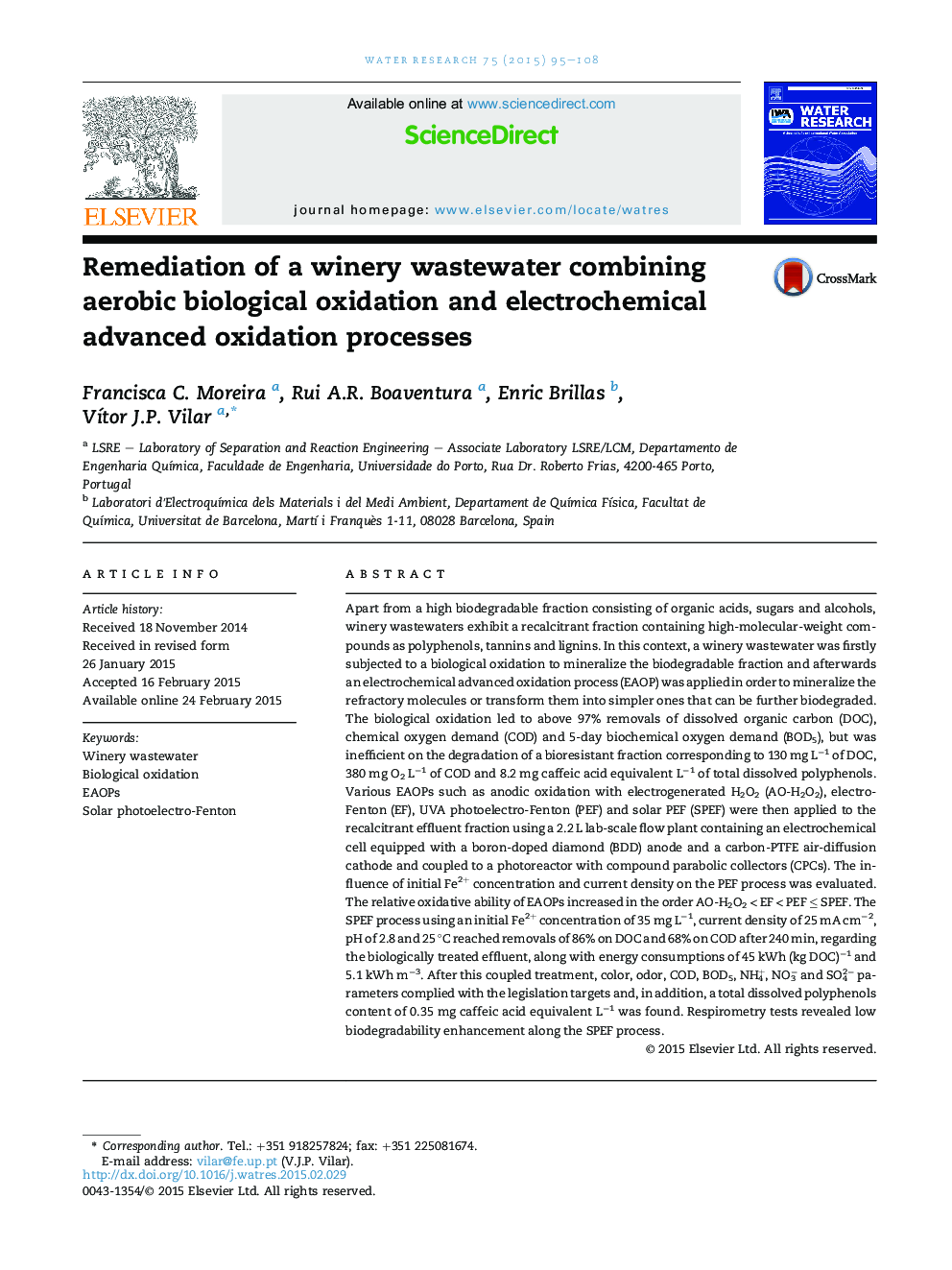| کد مقاله | کد نشریه | سال انتشار | مقاله انگلیسی | نسخه تمام متن |
|---|---|---|---|---|
| 4481204 | 1623093 | 2015 | 14 صفحه PDF | دانلود رایگان |
• First study on EAOPs for winery wastewater remediation.
• Biodegradable fraction of the winery effluent removed by initial biological oxidation.
• Order of EAOPs efficiency on the recalcitrant fraction reduction: AO-H2O2 < EF < PEF ≤ SPEF.
• Up to 86% DOC, 68% COD and 89% BOD5 removals with 5.1 kWh m−3 cost for SPEF process.
• Color, odor, COD, BOD5, NH4+, NO3− and SO42− in agreement with legislation at the end.
Apart from a high biodegradable fraction consisting of organic acids, sugars and alcohols, winery wastewaters exhibit a recalcitrant fraction containing high-molecular-weight compounds as polyphenols, tannins and lignins. In this context, a winery wastewater was firstly subjected to a biological oxidation to mineralize the biodegradable fraction and afterwards an electrochemical advanced oxidation process (EAOP) was applied in order to mineralize the refractory molecules or transform them into simpler ones that can be further biodegraded. The biological oxidation led to above 97% removals of dissolved organic carbon (DOC), chemical oxygen demand (COD) and 5-day biochemical oxygen demand (BOD5), but was inefficient on the degradation of a bioresistant fraction corresponding to 130 mg L−1 of DOC, 380 mg O2 L−1 of COD and 8.2 mg caffeic acid equivalent L−1 of total dissolved polyphenols. Various EAOPs such as anodic oxidation with electrogenerated H2O2 (AO-H2O2), electro-Fenton (EF), UVA photoelectro-Fenton (PEF) and solar PEF (SPEF) were then applied to the recalcitrant effluent fraction using a 2.2 L lab-scale flow plant containing an electrochemical cell equipped with a boron-doped diamond (BDD) anode and a carbon-PTFE air-diffusion cathode and coupled to a photoreactor with compound parabolic collectors (CPCs). The influence of initial Fe2+ concentration and current density on the PEF process was evaluated. The relative oxidative ability of EAOPs increased in the order AO-H2O2 < EF < PEF ≤ SPEF. The SPEF process using an initial Fe2+ concentration of 35 mg L−1, current density of 25 mA cm−2, pH of 2.8 and 25 °C reached removals of 86% on DOC and 68% on COD after 240 min, regarding the biologically treated effluent, along with energy consumptions of 45 kWh (kg DOC)−1 and 5.1 kWh m−3. After this coupled treatment, color, odor, COD, BOD5, NH4+, NO3− and SO42− parameters complied with the legislation targets and, in addition, a total dissolved polyphenols content of 0.35 mg caffeic acid equivalent L−1 was found. Respirometry tests revealed low biodegradability enhancement along the SPEF process.
Figure optionsDownload high-quality image (241 K)Download as PowerPoint slide
Journal: Water Research - Volume 75, 15 May 2015, Pages 95–108
